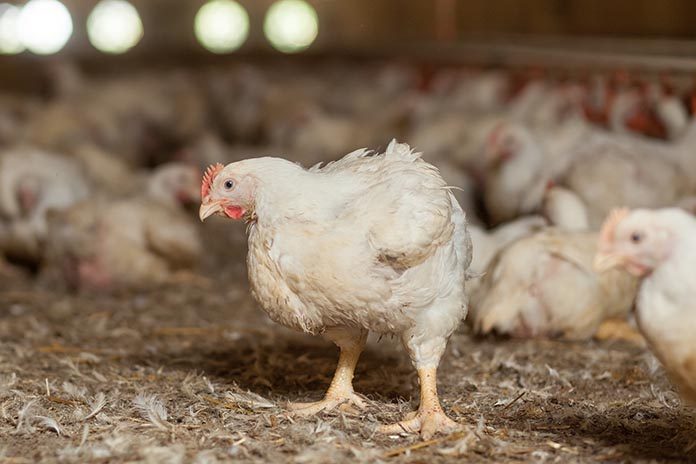
Foodborne pathogens continue as a considerable threat to public health. Intensification of livestock production, especially poultry, facilitates diseases transmission by increasing population size and density.
Chickens are a natural host for Campylobacter, and C. jejuni was found to be the dominating species. Widespread bacterium Salmonella is also found commonly in poultry, and is a serious threat to broiler and egg production.
Commercial poultry hatcheries are ideal environments for the contamination and dissemination of enteropathogens. At the farm level, the drinking water should be of potable quality. The litter also may introduce pathogens into the primary production. Feed is a critical point in control of poultry pathogens, especially of Salmonella. But not only at the level of livestock production, the techniques with which animals are slaughtered and processed and how products are stored, packed, transported, and prepared at the place they are consumed, also enable foodborne disease outbreaks. Microbiological analysis is an integral part of food quality control, as well as of the management of food chain safety. Microbiological testing of foodstuffs complements the preventive approach to food safety activities based mainly on implementation and application of the concept of Hazard Analysis and Critical Control Points (HACCP).
Industrialization of production and intensive farming has resulted in the (re)emergence of infectious diseases, and consequently to the increased use of antimicrobials. Although antimicrobials have proven to be very effective against livestock infections, their use is associated with adverse effects. Antibiotics are not specific towards pathogens, kill commensal microbiota in livestock, and their extensive use has resulted in evolutionary adaptations in microbes, resulting in wide-spread resistance.
Consequently, contamination of the environment with pathogens resistant to antimicrobial agents is a serious threat, not only as a source of disease but also as a source of resistance genes that can easily spread to other bacteria in the environment. Hygiene measures on their own are not sufficient to eliminate the threat of foodborne diseases and also the antibiotic resistant bacteria in the food chain. Microbial interactions used in food processing are a sustainable option to eliminate many risks and to improve food safety. Such microbial antagonisms can be applied in primary production (in animals) or during food processing. Today, the most commonly used are probiotics.
Probiotics, defined as a live microbial feed supplement that beneficially affects the host, are believed to improve the overall health of an animal by improving the microbial balance in its gut and its intestinal metabolic activity, and by stimulating its immune system. Vaccination is another intervention possibility to reduce contamination in poultry production.
Prebiotics are defined as indigestible carbohydrates, which can be fermented in the digestive tract. Used as a feed additive, they can have a beneficial influence on the intestinal milieu of the host, and can affect directly or indirectly the composition of the gut microflora. Competitive exclusion (CE) (application of microflora of healthy adult poultry digestive tract to newly- hatched chicks) is another type of preventive measure that may be used to control pathogenic enterobacteria in poultry flocks. CE products has been proved effective in numerous laboratory trials, and this concept is well established especially for Salmonella and Campylobacter.
Implementation of high-level farm biosecurity and control on animal trade along with good hygiene in the food chain is important in the prevention of spread of zoonotic bacteria. Experts from academia, industry and decision-makers exchange know-how not only to discuss and prepare for the future policy development but also to identify the most promising future research fields and topics in food safety. Because of the complexity of rout of transmission of the foodborne zoonoses, One Health approach, or “the collaborative efforts of multiple disciplines working locally, nationally and globally to attain optimal health for people, animals and our environment” is needed.
















